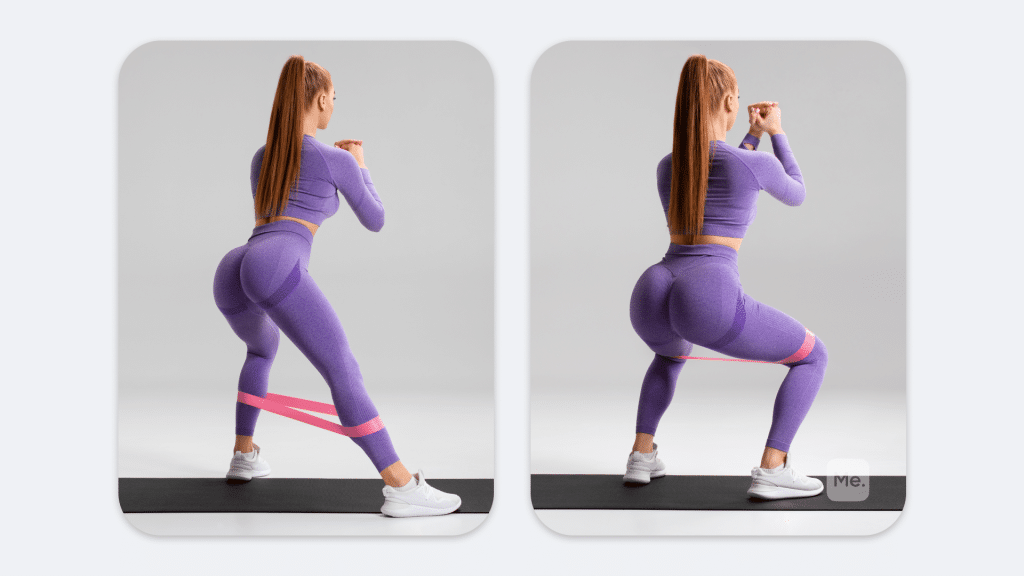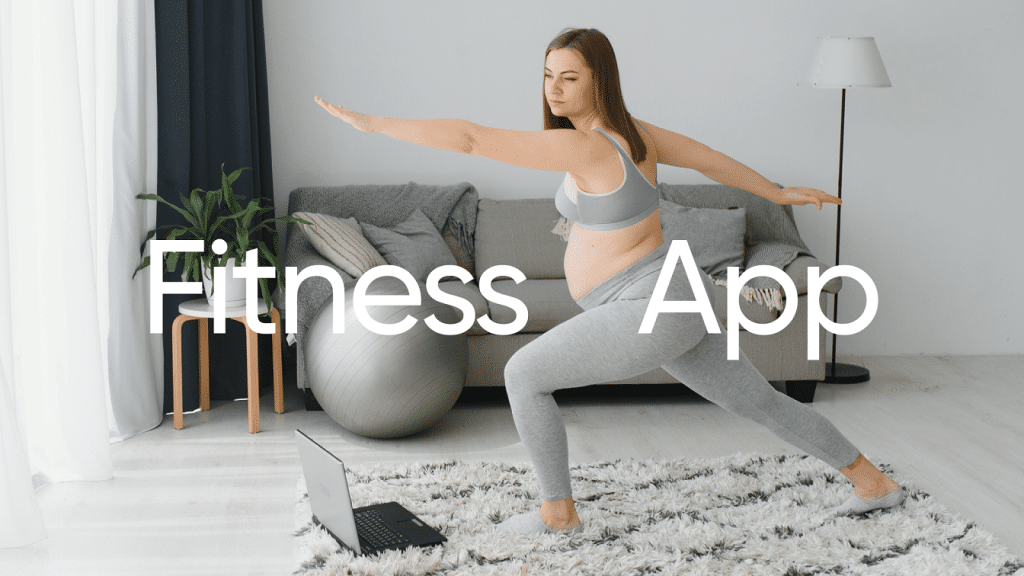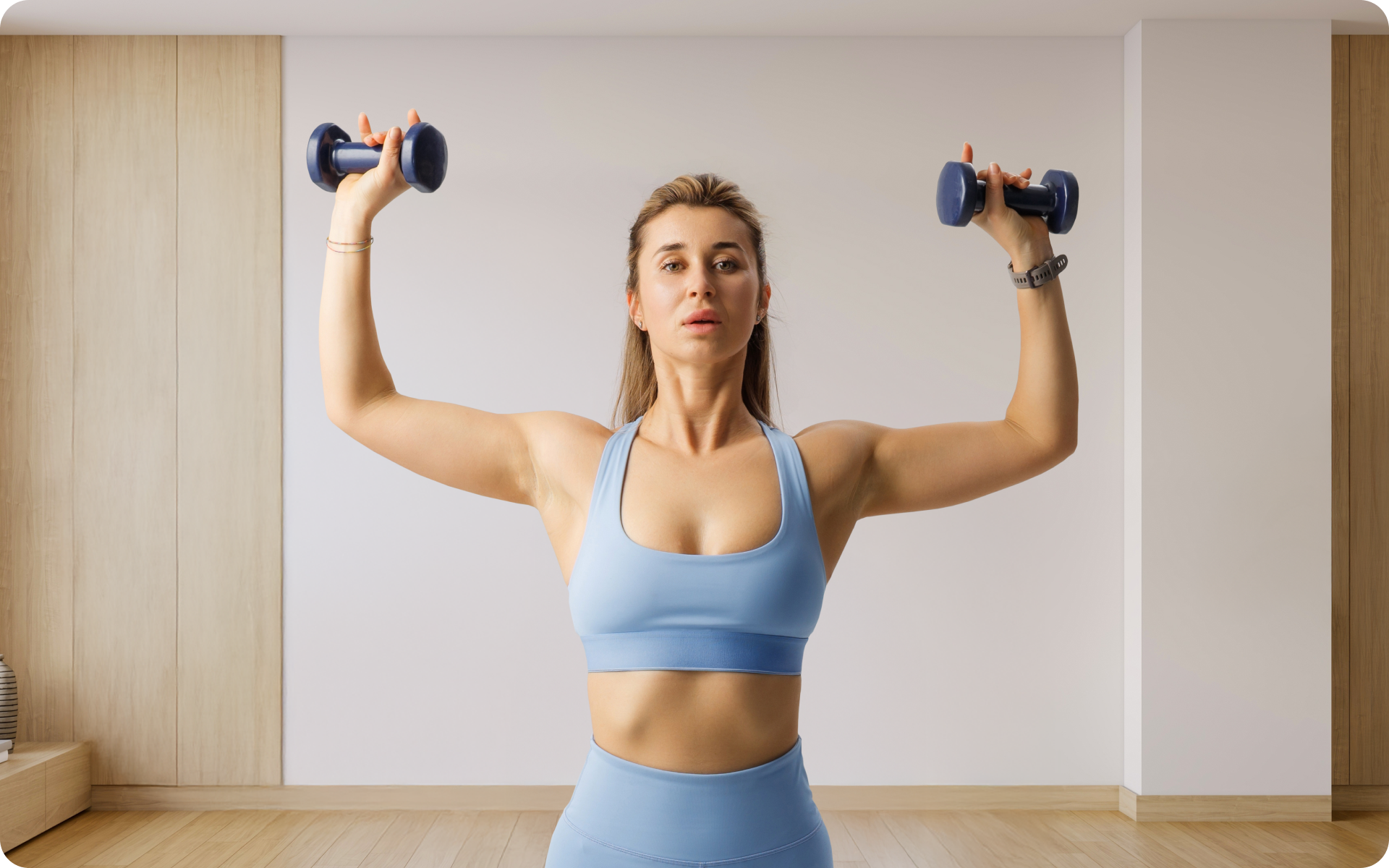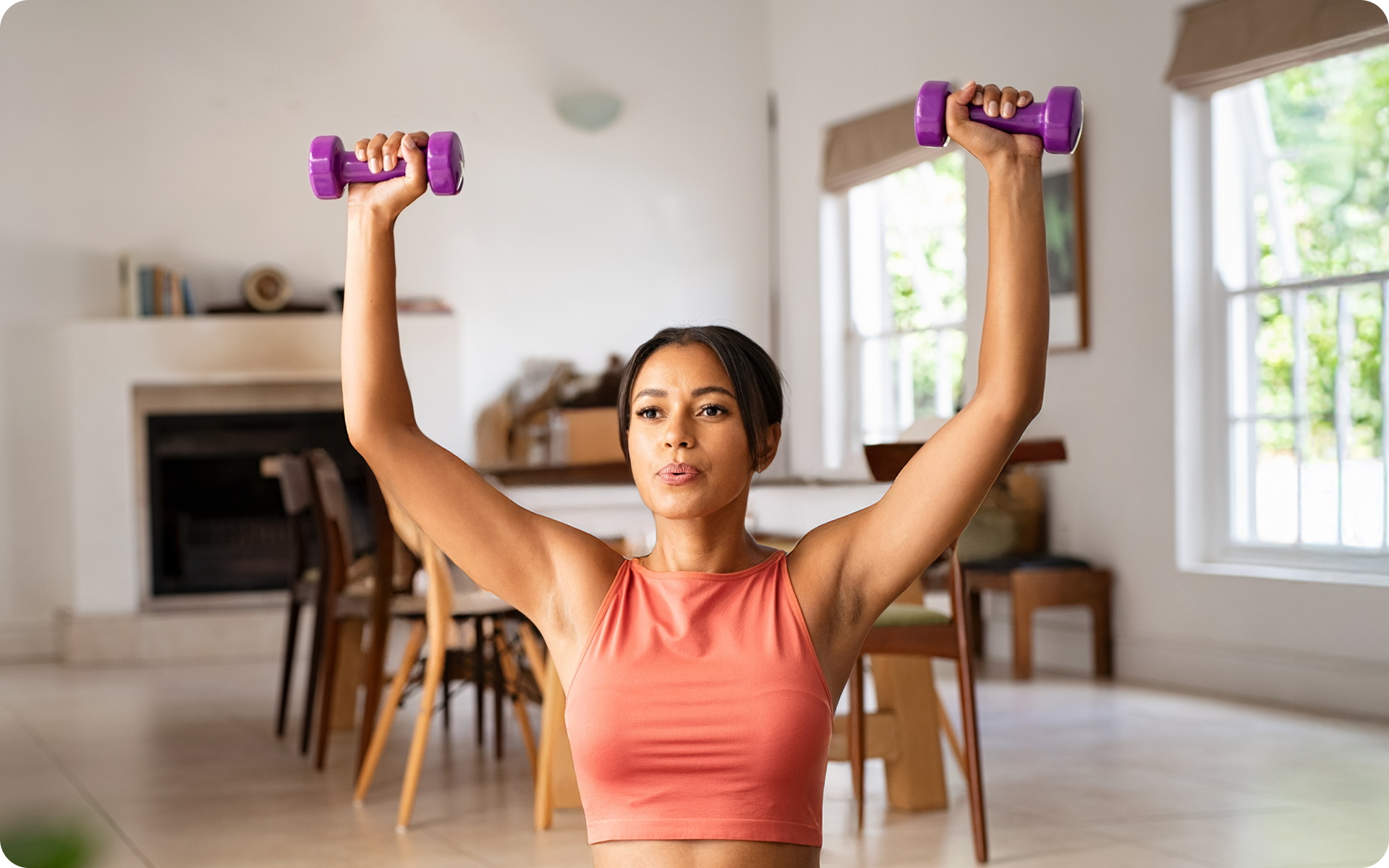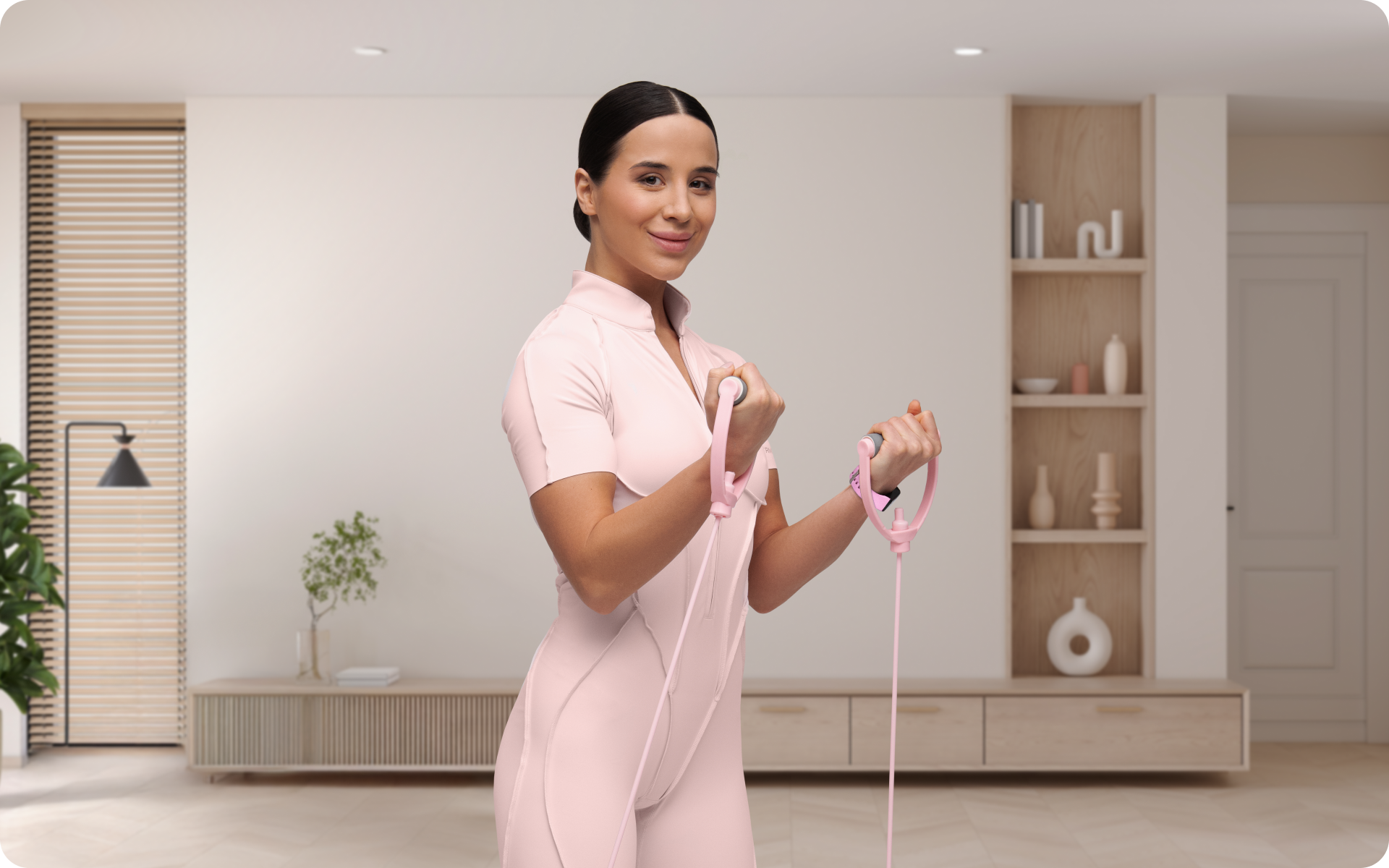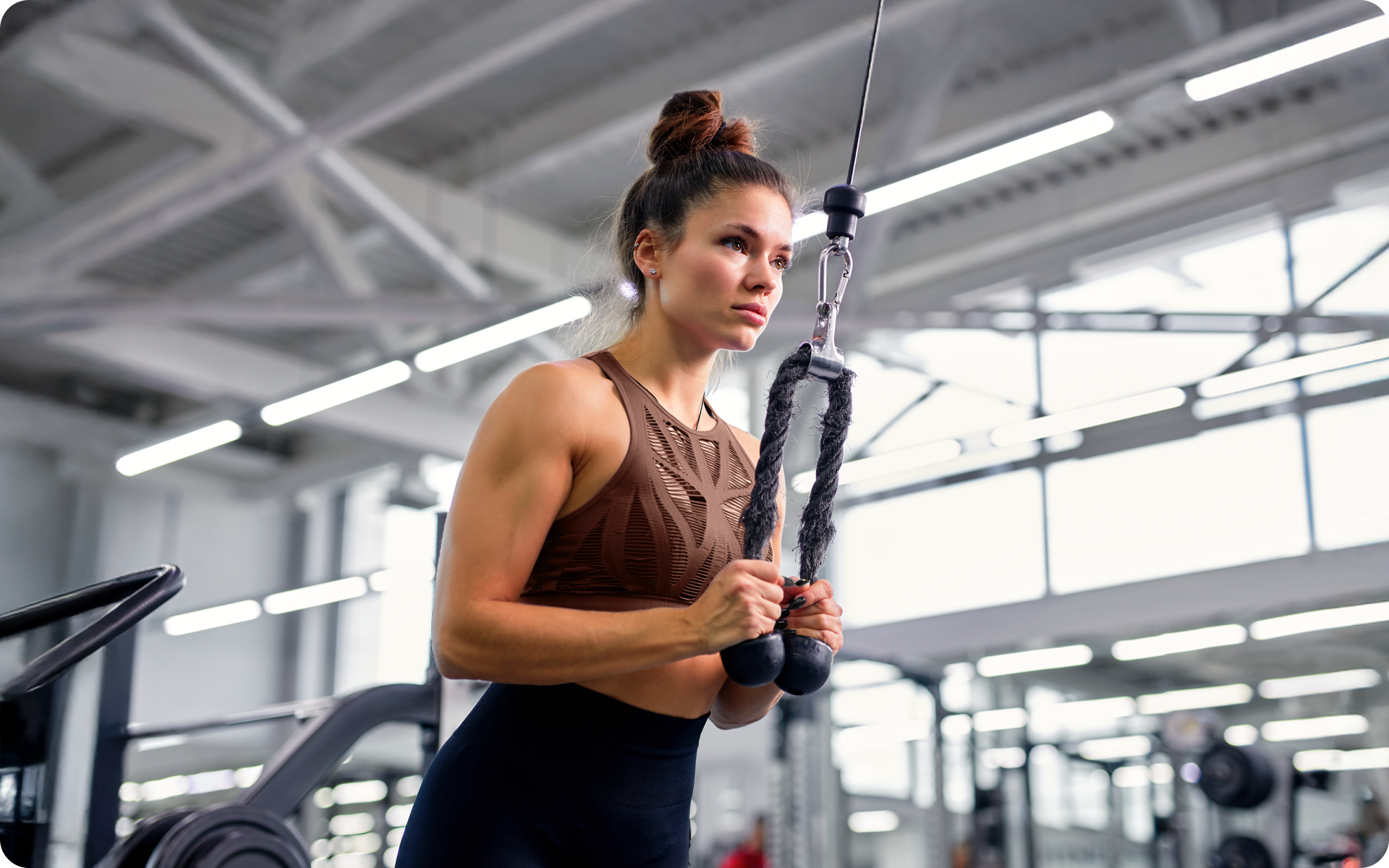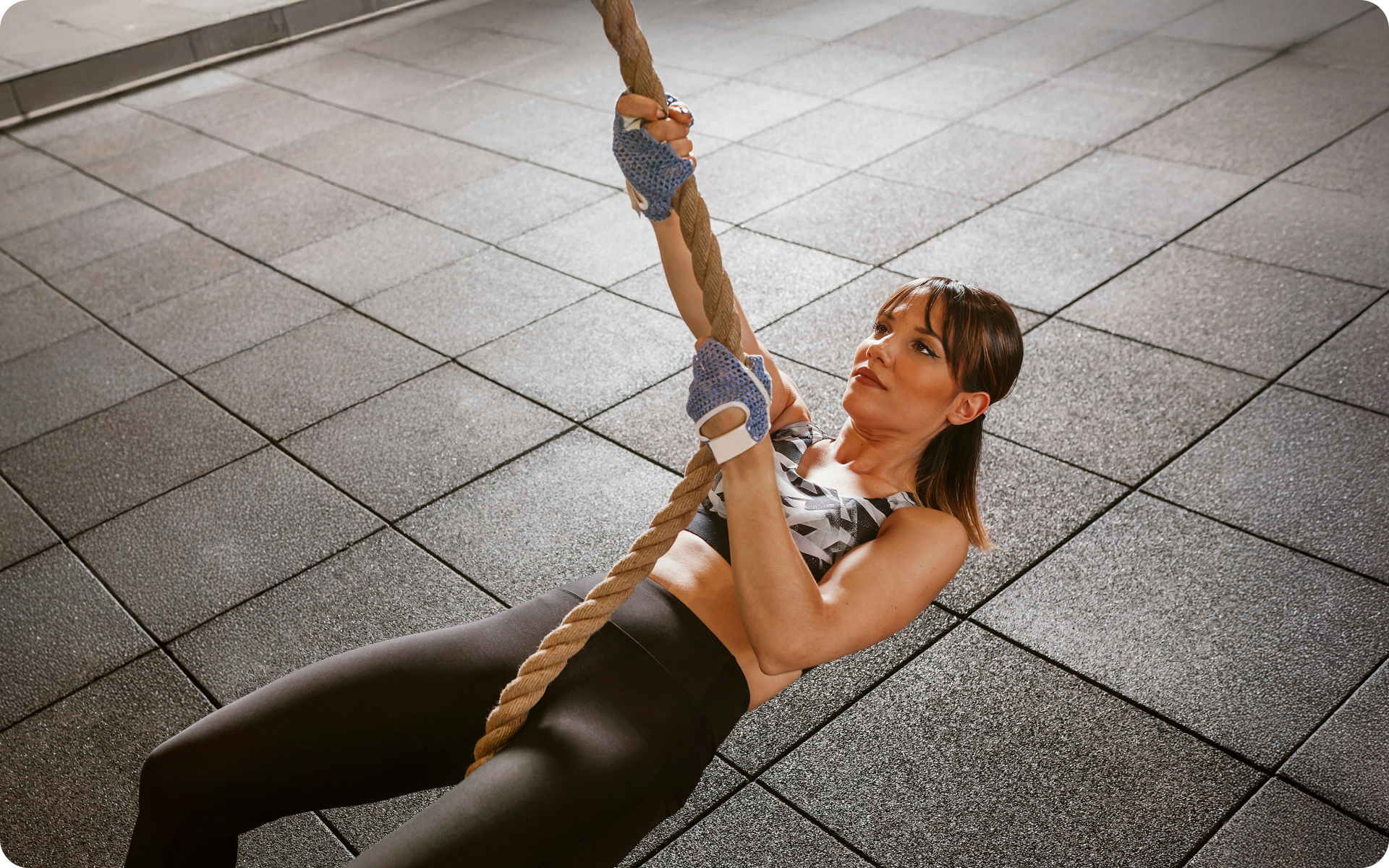Your biceps are the muscles at the front side of your upper arms. They help you lift objects and can become tense from activities such as typing or playing tennis (2).
Over time, your biceps can become shortened and tight, which can lead to pain in your shoulders and neck.
One way to prevent this is to do a standing bicep stretch. This stretch helps lengthen your biceps and improve range of motion in your shoulders. It also strengthens your rotator cuff muscles, which are the muscles that stabilize your shoulder joints.
Here’s how to do a standing bicep stretch:
- Stand with your feet shoulder-width apart and your knees slightly bent.
- Reach your left hand behind your back and clasp your right wrist.
- Gently pull your right arm up until you feel a stretch in your left biceps.
- Hold the stretch for 30 seconds, then release and repeat on the other side.
- Do 2-3 sets of the stretch on each side.
You can also do this stretch sitting down or lying down if it’s more comfortable for you. Just be sure to keep your back straight and avoid arching it, which can put strain on your spine.
Adding the standing bicep stretch to your fitness routine can help you maintain strong and healthy arms. However, it’s not the only stretch or exercise you should do.
Incorporate other exercises that work all the muscles in your arms, such as triceps stretches and biceps curls. This will help ensure that your arms are evenly strong and less likely to be injured.
Common Bicep Stretch Mistakes To Avoid
Avoid these common mistakes to make your bicep stretch safe and effective:
Arching Your Back
Keep your back straight during the stretch. Avoid arching it, which can put strain on your spine.
Bouncing
When you reach the point of tension in the stretch, hold the position. Bouncing can cause small tears in the muscle tissue, which can lead to pain and inflammation.
Read More: Outer Bicep Workout To Pack Muscle On Your Biceps
Holding Your Breath
It may seem silly, but breathing is important when you’re doing any type of physical activity, including stretching. Taking deep breaths helps you relax your muscles and makes the stretch more effective.
Overstretching
Don’t try to push your body further than it can go. If you feel pain, ease off the stretch. You should only feel mild tension in the muscle, not pain.
Locking Your Elbows
Keep your elbows soft, not locked. Locking your elbows can put strain on the tendons and muscles in your arms.
Failing To Warm Up
Warming up before stretching helps increase blood flow to your muscles and makes them more pliable (5). Take a few minutes to walk or do some light calisthenics before starting your stretch.
Not Stretching Regularly
Stretching is most effective when it’s done regularly. aim to stretch at least 2-3 times per week for the best results (3).
Bicep Stretch Variations
Here are a few other stretches that may offer similar benefits as the standing bicep stretch:
Doorway Bicep Stretch
This stretch can be done at home, work, or even when you’re out and about. All you need is a door frame to hold onto.
- Start by standing in a doorway with your feet shoulder-width apart.
- Place your forearms on the doorframe at about chest height.
- Lean your body forward until you feel a stretch in your biceps.
- Hold the stretch for 30 seconds, then release and repeat on the other side.
- Do 2-3 sets of the stretch on each side.
Seated Bicep Stretch
This stretch is a good option if you have trouble reaching your arms behind your back. You can do it in a chair, on the edge of a bed, or even on a yoga mat.
- Start by sitting on the floor with your legs extended in front of you.
- Reach your right arm behind your back and clasp your left wrist.
- Gently pull your left arm up until you feel a stretch in your right biceps.
- Hold the stretch for 30 seconds, then release and repeat on the other side.
- Do 2-3 sets of the stretch on each side.
Pec Stretch
This stretch not only helps lengthen your biceps, but it also stretches your chest muscles.
- Start by standing with your feet shoulder-width apart and your knees slightly bent.
- Clasp your hands behind your back.
- Gently pull your hands down until you feel a stretch in your chest and biceps.
- Hold the stretch for 30 seconds, then release and repeat.
- Do 2-3 sets of the stretch.
Whether you’re looking to simply pep up your fitness routine, jazz up your diet with mouth-watering low-calorie recipes or want to get your act together and significantly drop that number on your scale – BetterMe app has got you covered! Improve your body and revamp your life with us!
Triceps Stretch
This stretch is a good complement to the bicep stretch since it helps lengthen the muscles on the back of your upper arms.
- Start by standing with your feet shoulder-width apart and your knees slightly bent.
- Reach your right arm overhead and clasp your left wrist.
- Gently pull your left arm down until you feel a stretch in the back of your right upper arm.
- Hold the stretch for 30 seconds, then release and repeat on the other side.
- Do 2-3 sets of the stretch on each side.
Bicep Stretch Benefits
Incorporating the standing bicep stretch into your fitness routine can offer a number of benefits, including:
Increased Range Of Motion
Range of motion is the distance your joints can move in certain directions.
The standing bicep stretch can help increase the range of motion in your shoulders, making it easier to do everyday activities, such as reach for something on a high shelf or brush your teeth (6).
Better range of motion can improve your performance at the gym, too (4). For example, if you do overhead presses, increasing the range of motion in your shoulders can help you lift the weight more easily.
Improved Joint Mobility
Joint mobility is the ability of your joints to move through their full range of motion (7). The standing bicep stretch can help improve joint mobility in your shoulders, making it easier to perform everyday tasks, such as reaching for something on a high shelf or brushing your teeth.
Stronger Rotator Cuff Muscles
The rotator cuff is a group of muscles and tendons that attach your upper arm bone to your shoulder blade. These muscles help lift your arm overhead and rotate your arm (1).
The standing bicep stretch can help strengthen the rotator cuff muscles, which can improve your ability to do overhead presses and other exercises that require these muscles.
Read More: Flabby Arms Challenge: Sculpt and Strengthen Those Shoulders, Triceps, And Biceps
Improved Posture
Poor posture can lead to muscle imbalances and pain in the shoulders, neck, and back (8).
The standing bicep stretch can help improve your posture by lengthening the muscles in the front of your body and strengthening the muscles in the back. This can help you sit and stand up straighter.
Prevention Of Injuries
Stretching the muscles in your arms can help prevent injuries, such as strains and tears (9). The increased range of motion from stretching can also help you avoid joint pain.
Reduced Soreness
The standing bicep stretch can help reduce muscle soreness by increasing blood flow to the muscles. This can also help improve your recovery time after a workout (6).
Boosted Arm Strength
The standing bicep stretch can also help increase arm strength.
By lengthening the muscles in your arms the stretch can help reduce tension and improve muscle function. This can lead to better performance in activities that require arm strength, such as lifting weights or playing tennis.
If you struggle to even flirt with the idea of giving up your favorite foods or working out till your legs give way – BetterMe app is here to breathe a fresh perspective into the way you view the weight loss process! Check out the app and experience the fun side of fitness and dieting with BetterMe!
The Bottom Line
The standing bicep stretch is a simple and effective way to improve range of motion, joint mobility, posture, and arm strength. Incorporating this stretch into your fitness routine can also help prevent injuries. Give it a try and see how it benefits you!
DISCLAIMER:
This article is intended for general informational purposes only and does not serve to address individual circumstances. It is not a substitute for professional advice or help and should not be relied on for making any kind of decision-making. Any action taken as a direct or indirect result of the information in this article is entirely at your own risk and is your sole responsibility.
BetterMe, its content staff, and its medical advisors accept no responsibility for inaccuracies, errors, misstatements, inconsistencies, or omissions and specifically disclaim any liability, loss or risk, personal, professional or otherwise, which may be incurred as a consequence, directly or indirectly, of the use and/or application of any content.
You should always seek the advice of your physician or other qualified health provider with any questions you may have regarding a medical condition or your specific situation. Never disregard professional medical advice or delay seeking it because of BetterMe content. If you suspect or think you may have a medical emergency, call your doctor.
SOURCES:
- Anatomy, Rotator Cuff (2012, ncbi.nlm.nih.gov)
- Anatomy, Shoulder and Upper Limb, Biceps Muscle (2021, ncbi.nlm.nih.gov)
- CURRENT CONCEPTS IN MUSCLE STRETCHING FOR EXERCISE AND REHABILITATION (2012, ncbi.nlm.nih.gov)
- Effects of range of motion on muscle development during resistance training interventions: A systematic review (2020, journals.sagepub.com)
- Effects of Warming-up on Physical Performance: A Systematic Review With Meta-analysis (2010, journals.lww.com)
- How to Stretch Your Biceps: 4 Benefits of Bicep Stretches (2022, masterclass.com)
- Joint Mobility and Stability (2019, acefitness.org)
- Posture – Physiopedia (n.d., physio-pedia.com)
- Warm-up and stretching in the prevention of muscular injury (2007, pubmed.ncbi.nlm.nih.gov)

